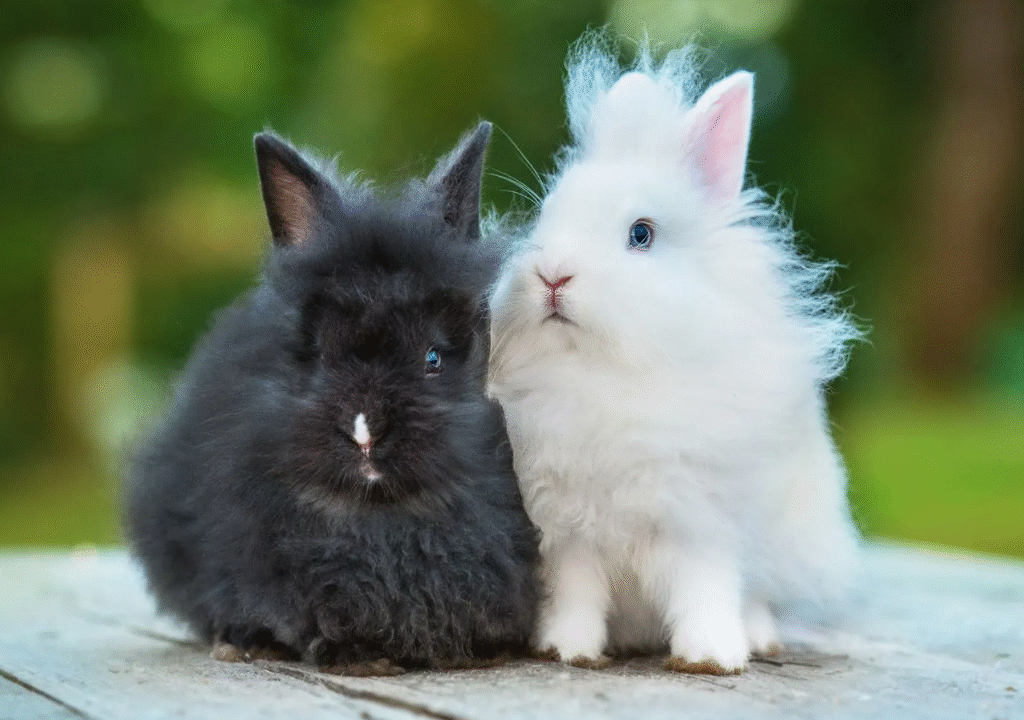When it comes to small, elegant, and charming rabbit breeds, the Polish Bunny stands out as a favorite among pet enthusiasts. Known for its compact size, smooth coat, and curious nature, the Polish Bunny is not just adorable but also incredibly lovable. In this comprehensive guide, we’ll explore everything you need to know about this breed — from its history and care needs to personality traits and more.
🐰 What Is a Polish Bunny?
The Polish Bunny, despite what the name suggests, does not originate from Poland. In fact, this breed has its roots in England and was later developed in the United States. It’s one of the oldest domesticated rabbit breeds and is recognized for its dwarf-like appearance, though it’s not a true dwarf breed.
Weighing between 2.5 to 3.5 pounds, this small rabbit is compact yet refined, with a short, rounded body and a sweet face. Its well-groomed coat and shiny fur add to its elegant appearance.
🧬 Polish Bunny Characteristics
Let’s take a closer look at what makes the Polish Bunny so unique:
| Feature | Description |
|---|---|
| Weight | 2.5 – 3.5 pounds |
| Lifespan | 5 – 8 years (can live up to 10 years) |
| Coat Type | Short, smooth, glossy |
| Temperament | Friendly, calm, curious |
| Ideal for | Families, singles, apartment living |
| Common Colors | White, black, blue, chocolate, broken |
🏡 Is the Polish Bunny a Good Pet?
Absolutely! The Polish Bunny is often recommended as a pet for both new and experienced rabbit owners. Its gentle temperament, coupled with its small size, makes it a perfect choice for apartment dwellers and families with children (under supervision).
These rabbits are easy to handle, rarely bite, and form strong bonds with their owners. If socialized early, they can even enjoy cuddling sessions and will seek attention from their human companions.
🧠 Polish Bunny Personality
The Polish Bunny is calm yet curious. They enjoy exploring their surroundings, playing with toys, and interacting with humans. Though small, they have a big personality:
- Affectionate: Once comfortable, they seek out human attention.
- Intelligent: They can be trained to use a litter box.
- Alert: With bright, shiny eyes, they’re always aware of what’s happening around them.
Remember, like all rabbits, Polish Bunnies are prey animals by nature. So, loud noises or sudden movements can scare them. Always approach them gently and patiently.
🥦 What to Feed a Polish Bunny
A balanced diet is crucial for the health and happiness of your Polish Bunny.
Recommended Diet:
- Hay (Timothy or Meadow): 70% of their diet
- Fresh Veggies: Leafy greens, carrots (in moderation), cilantro
- Rabbit Pellets: Fortified with fiber
- Fresh Water: Always available
Avoid feeding them iceberg lettuce, sugary fruits in excess, or any processed human food. For detailed guidance on bunny diets, the House Rabbit Society provides great resources.
🛁 Grooming & Maintenance
The Polish Bunny has a low-maintenance coat, which is one of the reasons it’s popular with busy pet owners.
- Brushing: Once a week is enough
- Nail Trimming: Every 4–6 weeks
- Check Ears: Polish Bunnies have upright ears that can collect dust or mites, so inspect regularly
- Litter Training: Yes, it’s possible! Use a rabbit-safe litter in a low-sided box.
🏥 Common Health Issues in Polish Bunnies
Like all rabbits, Polish Bunnies are prone to certain health problems if not properly cared for.
Watch out for:
- Dental Disease: Due to continuously growing teeth
- GI Stasis: A potentially fatal condition if not treated quickly
- Obesity: From overfeeding pellets or treats
- Respiratory Issues: Especially in unclean enclosures
Regular vet checkups with a rabbit-savvy vet are recommended at least once a year.
🐣 Breeding & Baby Polish Bunnies
Breeding Polish Bunnies should only be done by responsible breeders, as their small size can lead to complications during pregnancy. The average litter size is between 2 to 4 kits.
Baby Polish Bunnies, or “kits,” are born hairless and blind. They grow quickly, and within a few weeks, they begin to resemble the elegant adults they’ll soon become.
🏠 Housing Your Polish Bunny
A Polish Bunny doesn’t need a huge enclosure, but it should be safe, clean, and enriching.
Setup Suggestions:
- Cage Size: Minimum 24×36 inches
- Bedding: Paper-based or hay (avoid cedar shavings)
- Toys: Chew toys, tunnels, cardboard boxes
- Exercise Time: At least 1–2 hours daily in a rabbit-proofed area
Always supervise your bunny during free-roam time to prevent chewing on wires or furniture.
🤔 Fun Facts About the Polish Bunny
- The white Polish Bunny with red eyes is commonly used in magic shows!
- Despite their small size, they’re excellent jumpers and can be trained for agility courses.
- The breed was first recognized by the American Rabbit Breeders Association (ARBA) in 1938.
📦 Where to Adopt or Buy a Polish Bunny
While there are many reputable breeders, always consider adopting first. Shelters often have small rabbits like Polish Bunnies looking for a loving home.
If you’re set on a breeder, make sure they:
- Provide health records
- Allow visits to see living conditions
- Have a good reputation and are ARBA-registered
You can also visit websites like Petfinder.com or AdoptAPet.com to search for available Polish Bunnies near you.
✅ Final Thoughts
The Polish Bunny is a wonderful companion — gentle, elegant, and low-maintenance. Whether you’re a first-time bunny owner or an experienced rabbit lover, this breed can fit beautifully into your life.
Just remember, owning a Polish Bunny is a responsibility. With the right care, love, and environment, they can live a long and happy life as part of your family.
👉 Looking for more pet care advice, tips, and breed guides?
Visit MyPetVista — your go-to resource for everything pets!
